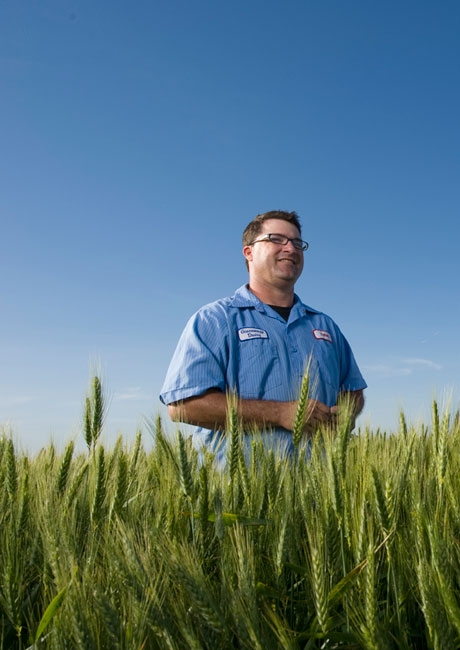Hanford farmer Dino Giacomazzi receives Leopold Conservation Award
Hanford dairy farmer Dino Giacomazzi, a founding member of UC Conservation Agriculture Systems Innovation (CASI), received the prestigious 2012 Leopold Conservation Award for California in acknowledgement of his exemplary land stewardship and management.
The $10,000 Leopold Conservation Award is named in honor of world-renowned conservationist Aldo Leopold. The award, presented annually in eight states, recognizes farming and ranching families who are actively committed to living a land ethic.
Giacomazzi manages the dairy and forage production operations at Giacomazzi Dairy, established in southeastern Hanford in 1939. He lives on the 300-acre dairy property and oversees milking, animal nutrition and feed production.
In the spring of 2005, Giacomazzi initiated a demonstration evaluation of strip-till corn planting in a 28-acre field as part of an Environmental Quality Incentives Program contract he had received from the USDA Natural Resources Conservation Service.
“Dino virtually guaranteed his ultimate success with conservation agriculture by the sheer intensity of this effort and the comprehensive nature of his attention to detail,” said Jeff Mitchell, UC Cooperative Extension specialist in the Department of Plant Science at UC Davis. Mitchell is the chair of CASI.
Though no one realized it at the time, Giacomazzi was beginning to formulate a conservation agriculture systems approach. The systems approach would later become, as he has said, “completely new forage production systems for the entire dairy industry.”
Following this successful trial, Giacomazzi established all of the dairy’s corn acreage using strip-tillage in 2006. However, rather than take a single approach, he set out a comprehensive array of strip-tillage evaluations that included three different strip-till implements, strip-till corn varieties, and twin-row versus single-row planting configurations.
Later that year, he opened his dairy to the public for a Strip-Till Field Day that attracted more than 150 farmers.
“To this day, CASI considers this field day to be the most successful and impacting extension education event that our workgroup has been involved with during the past decade,” Mitchell said.
Over the course of the strip-till evaluations at his dairy, Giacomazzi also shared his expertise with a number of visitors, including representatives of Sen. Dianne Feinstein’s office in Washington, D.C., and the USDA NRCS Regional Agronomist for the Western U.S.
In his quest for the optimal CT forage corn system, Giacomazzi investigated twin-row planting options and is now one of the state’s primary authorities on twin-row production. The idea is to stagger two lines of plants 7.5 inches apart in 30-inch row spacing, giving plants optimal access to resources – nutrients, light, water, etc. From 2007 to 2009, Giacomazzi rigorously tested this hypothesis in a series of comprehensive on-farm studies.
Since the fall of 2008, Giacomazzi has also been collaborating with scientists from the USDA Agricultural Research Service National Soil Tilth Lab in Ames, Iowa, on a major, large-scale quantification of particulate matter emissions under traditional and conservation tillage at his dairy. He worked with Jerry Hatfield, the research director of the Tilth Lab, and a large group from Utah State University. This group quantified dust emissions using LIDAR, laser beam and dispersion modeling technologies and has found significant reductions in particulate emissions in Giacomazzi’s strip-till system relative to his former standard tillage approach.
Last spring, Giacomazzi began using a twin row Monosem planter on his farm that enables GPS precision guidance and application technologies from Trimble Corporation. This instrumentation allows for precision application of seed and nutrients in the same planting pass. He recently showcased his progress on his CT silage production systems by opening his farm to still another public field day that attracted several farmers and media coverage.
“Dino’s contributions to our collective efforts in CASI have been unparalleled,” Mitchell said. “He has made huge contributions to the development of knowledge and to the expansion of conservation agricultural systems in California’s Central San Joaquin Valley.”
_
Learn more: On Jan. 27, 2012, Giacomazzi presented the keynote address at the public launching of the Conservation Agriculture Systems Innovation Workgroup. A video recording of his address is posted on the CASI website: http://casi.ucanr.edu/Video_library_636/CASI_launch_video_archive/

